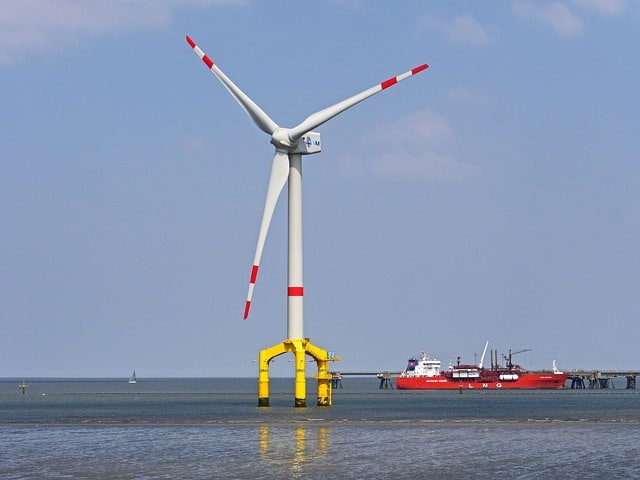Introduction – Why Is Non Renewable Energy Bad
Why Is Non Renewable Energy Bad? This is a great question. There’s a lot of talk about renewable vs non-renewable and the main argument why we need to go for renewables often gets lost. Plus the argument for renewables is subtle, as it requires us to work out a number of chain-of-event effects.
First, lets’s define non renewable energy sources as those sources of energy that cannot be regenerated or replaced in a short period of time. This includes sources such as fossil fuels, coal, natural gas, and nuclear energy. This is concordant with National Geographic’s definition.
Non-renewable energy comes from sources that will run out or will not be replenished in our lifetimes—or even in many, many lifetimes. Most non-renewable energy sources are fossil fuels: coal, petroleum, and natural gas.
National Geographic website
Non renewable energy sources are responsible for the majority of the world’s energy production, with fossil fuels being the most widely used. However, non renewable energy sources are becoming increasingly problematic due to their negative environmental, economic, and health impacts.

Reason 1: Damaging Global Climate Change Due To Increased Carbon
The first and most important reason why non renewable energy is bad is due to its negative global climate change impact. This is because climate change has global, Earth-wide impact. The primary impact is warming of the planet, which has wide repercussions on our life, our food, our places to life. Warming leads to a number of secondary effects.
The 5 Major Effects Of Warming
For more info on the effects of climate change and warming take a look at a detailed exposition. Here we summarize the 5 major effects.
1. Rising sea levels: As global temperatures increase, glaciers and polar ice caps melt, resulting in rising sea levels. This can threaten coastal communities, destroy habitats, and displace wildlife.
2. Changes in weather patterns: Changes in global temperatures can cause shifts in weather patterns, leading to more severe storms, droughts, and flooding.
3. Increased air pollution: Warmer temperatures can lead to increased air pollution, as air becomes more stagnant and pollutants become trapped in the atmosphere.
4. Spread of disease: As temperatures increase, some diseases like malaria and dengue fever may become more common.
5. Decline in crop yields: Higher temperatures can cause stress to crops, resulting in lower yields and higher food prices.
Humans Release 38 Gigatons Of Carbon Every Year
The Earth’s carbon balance is the balance between the amount of carbon dioxide that is released into the atmosphere by human activities and the amount of carbon dioxide that is taken out of the atmosphere by natural processes. The carbon balance is an important factor in determining the Earth’s climate, as it affects the amount of heat that is trapped in the atmosphere.
Carbon dioxide is released into the atmosphere through a variety of human activities, such as the burning of fossil fuels, deforestation, and agricultural practices. The 38 Gigatons released is absorbed in part by plants and the oceans, but much of it remains in the atmosphere, leading to an increase in global temperatures.
The natural processes that can remove carbon dioxide from the atmosphere include photosynthesis by plants, absorption by the oceans, and chemical reactions in the atmosphere. While these processes can help to reduce the amount of carbon dioxide in the atmosphere, they are not able to keep up with the rate of human emissions.
Overall, the Earth’s carbon balance is currently out of balance, with more carbon dioxide being released into the atmosphere than being taken out. This is leading to an increase in global temperatures and climate change. To restore the balance, it is essential to reduce human emissions of carbon
Adaptation Will Not Be Enough
In the context of climate change, adaptation is the process of making adjustments to reduce the impacts of climate change, such as rising temperatures, changing weather patterns, and increased air pollution. Adaptation strategies can include changing land use and farming practices, developing new infrastructure, and creating new policies.
Adaptation is an incomplete solution because it does not address the root cause of climate change. While adaptation can help to reduce the impacts of climate change, it does not address the underlying issue of increasing greenhouse gas emissions, which is the primary cause of climate change.
Additionally, adaptation can be expensive and difficult to implement, especially in developing countries that may lack the resources or infrastructure to do so. Finally, adaptation does not guarantee that all impacts of climate change can be avoided. Some impacts, such as rising sea levels and extreme weather events, may be unavoidable.
Reason 2: Environmental Impact – Damaging Pollutants
The burning of fossil fuels also releases other pollutants such as sulfur dioxide, nitrogen oxides, and particulate matter, which can lead to air pollution and acid rain. This pollution can have severe repercussions for the environment, such as causing damage to ecosystems, reducing air quality.
Reason 3: Health Impact – Damaging Pollutants
Finally, non renewable energy sources can have negative health impacts. The pollutants released from burning these sources can be harmful to human health, leading to respiratory and cardiovascular diseases, and even premature death. In addition, the extraction and refining processes can have negative health impacts due to the use of hazardous chemicals.
Solutions
Fortunately, there are solutions to the problem of non renewable energy sources. The primary solution is to increase the use of renewable energy sources, such as solar, wind, and hydro power, which are much more environmentally friendly and have fewer economic and health impacts.
Conservation is also a viable option, as reducing energy consumption can help to decrease dependence on non renewable sources. Finally, governments can also help by regulating the use of non renewable energy sources and promoting the use of renewable energy sources.
Conclusions
In conclusion, non renewable energy sources are becoming increasingly problematic due to their negative environmental, economic, and health impacts. To combat this problem, solutions such as renewable energy, conservation, and government regulation can be implemented. By taking these steps, the world can reduce its dependence on non renewable energy sources and move towards a more sustainable energy future.

Anne Lauer
Anna Lauer is a writer, gardener, and homesteader living in rural Wisconsin. She has written for Mother Earth News, Grit, and Hobby Farms magazines. Anna is writing a new book about growing your food for free and an ultimate guide to producing food at little to no cost. When she’s not writing or gardening, Anna enjoys spending time with her husband and two young daughters.
